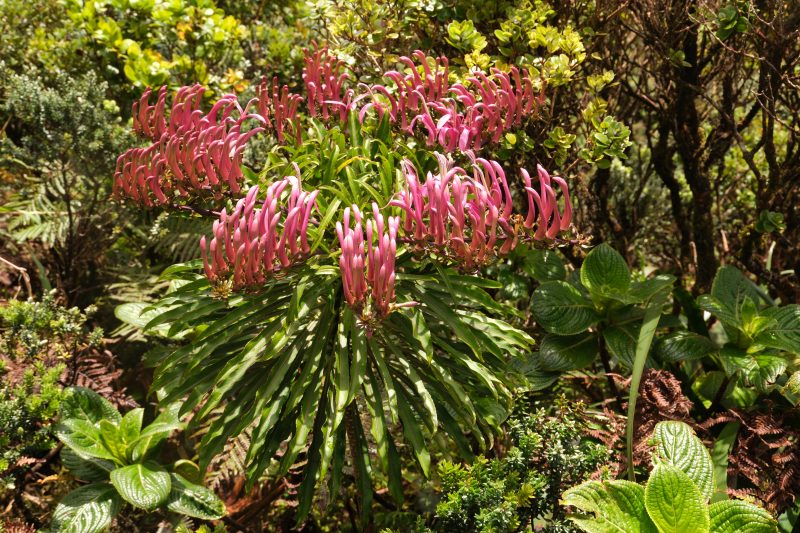Ulu Kanu: Trematolobelia

Why Koli‘i?
If you did the recent clearing, club hike, or had any other reason to be up on Ka‘ala recently, you know that these babies really put on a show up there. Plus when I asked the trail clearing crew’s resident plant man, Ken Suzuki, about which plants he wanted featured, he said that I had to talk about his beloved lobeliads. So here we are. I am not going to try and talk about all of these plants in one post, though, so this article focuses on just Trematolobelia- and mostly the ones on O‘ahu.
More About Koli‘i
There are eight species of Trematolobelia in the Hawaiian Islands: auriculata (Lana‘i), grandiflora (Hawai‘i), kaalae, kauaiensis (Kaua‘i), macrostachys, rockii (Moloka‘i), singularis, and wimmeri (Hawai‘i). All of these plants are endemic, and all of them are part of the Campanulaceae (Bellflower) family. It is a family of herbs, shrubs, or trees. The subfamily Lobelioideae, to which the Hawaiian genera belong, is characterized by irregular corollas and joined anthers.
On O‘ahu, Trematolobelia kaalae are found in the Wai‘anae mountains and tend to bloom in the spring and early summer. Trematolobelia macrostachys and singularis, on the other hand, can be found in the Ko‘olau mountains and usually flower from September through November. For the most part, you can tell the latter two apart when they are flowering because singularis typically only has one floral stalk. However, that is not always the case, and, of course, the plants are not always flowering. Never fear, though, you can also tell the difference between the two by looking at the stem. If the stem is knobby and shiny, it’s singularis. You can take a look at what I mean here since I have yet to get my own photo.
Until I get my singularis photo, please enjoy these kaalae images. So pretty.
How To Grow It
This series will hopefully encourage people to grow more native plants in their gardens, but this one is admittedly “iffy”. Growing them from seed is possible, but gathering them requires permission, and getting them to germinate can be difficult. Especially in the case of singularis, which is endangered, we want to leave populations alone so that they can have as many keiki as possible. Therefore, for the most part, these are best left in the hands of professionals. If anything, it’s a reason to go out and hike and see them in all their natural splendor when the time is right. Just remember to tread lightly and view responsibly so we can make sure that our own keiki get to enjoy them for generations to come.
If you can, though, it is fascinating to watch their life cycle. Below are photos of a macrostachys taken over time. From left to right is the same plant in August, September, and October of 2022. From leaf fuzz to five tiny baby arms to full on, buff flowering stalks?! How?
As if that wasn’t sorcery enough, then they go and flower. After the flowers are pollinated, the seeds develop in the calyx, which dries out and allows the seeds to disperse by wind. I mean, come on, that’s just objectively cool.
Sources
Gustafson, Robert J., et al. Hawaiian Plant Life: Vegetation and Flora. University of Hawai’i Press, 2014.
https://www.jstor.org/stable/40648097
https://studiamirabilium.com/2010/11/10/getting-to-know-your-hawaiian-lobeliads-1-trematolobelia-singularis/
Wagner, Warren L., Herbst, Derral R. and Sohmer, S.H.. Manual of the Flowering Plants of Hawai’i, University of Hawaii Press, 1990.



